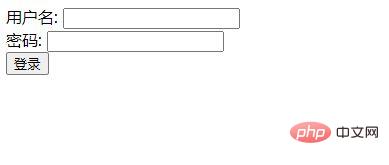What is session control and http protocol? How to use it?
The previous article introduced you to "What is PhpSpreadsheet?" how to use? 》, this article continues to introduce to you what is session control and http protocol? How to use it? (Code attached) has certain reference value. Friends in need can refer to it. I hope it will be helpful to everyone.

Session control
1. What is a session
In reality, two A conversation between individuals is a conversation.
In a computer, the communication between the client and the server is a session.
#2. What is session control
Control of the session is session control
3, HTTP protocol?
HTTP is called a stateless tracking protocol and cannot have any state tracking
Working principle:
HTTP is based on the client-server model and is connection-oriented. A typical HTTP transaction process has the following process
The client establishes a connection with the server;
The client makes a request to the server;
The server accepts the request and returns the corresponding file as a response according to the request;
The client is connected to the server.
Let’s take the code as an example (login page)
<!DOCTYPE html>
<html>
<head>
<meta charset="UTF-8">
<title>Document</title>
</head>
<body>
<form action= "login . php" method="post">
用户名: <input type="text" name= "name" id=""><br/>
密码:
<input type=" password" name="pwd" id=""><br/>
<input type="submit" value="登录">
</form>
</body>
</html>The running results are as follows:

Then we create a new file (login.php)
First we need to get the user name and password entered by the user, and secondly, we query whether the user is stored in the data.
How should we query:
//$sq1 = "SELECT id FROM user WHERE name=用户输入的用户名&& pwd=等于用户输入的密码加密后的字符串”; //有数据密码正确登录成功 //没有数据提示用户名或密码错 误 请注册
Let’s take the code as an example:
<?php var_dump($_POST); ?>
The running results are as follows:


If the code is as follows, let’s take a look at the running results:
<?php
var_dump($_POST);
if($_POST['name'] == '我爱你' && $_POST['pwd'] == 'admin'){
//登录成功
echo '<script>
alert("登录成功"); location="./index.php"</script>';
}else{
//登录失 败跳转注册页面
}
?>The running results are as follows:

Then we After creating a file (index.php), we start to make the home page of the project: then when we log in successfully, we start to make the card, that is, in login.php, we take the inserted code as an example,
//制作卡片 setCookie('islogin',true ,time()+3600,'/'); setCookie('name' ,$_POST['name'],time()+3600,'/');
The information in all our cards can be queried in the cookie
<?php
//这是项目的首页
var_dump($_COOKIE);
?>After we finish running, we can add the if conditional sentence to the index page,
<?php
//这是项目的首页
//var_dump($_COOKIE);
if($_COOKIE[' islogin'] != true){
//用户没有登录
echo ' 对不起,您无权访问3S后自动跳转到登录页面' ;
echo '<meta http-equiv="refresh"
content= "3;url=./login. html">';
}else{
//代表用户已经登录
echo '亲爱的'. $_COOKIE['name'].'会员,欢迎您回来<br/>' ;
echo '<a href="a . php">去a页面</a><brF>';
echo '<a href="b . php">去b页面</a><br/>';
echo '<a href="c . php">去c页面</a><br/>';
}
?>The running result As follows:

Recommended learning: "PHP Video Tutorial"
The above is the detailed content of What is session control and http protocol? How to use it?. For more information, please follow other related articles on the PHP Chinese website!

Hot AI Tools

Undresser.AI Undress
AI-powered app for creating realistic nude photos

AI Clothes Remover
Online AI tool for removing clothes from photos.

Undress AI Tool
Undress images for free

Clothoff.io
AI clothes remover

AI Hentai Generator
Generate AI Hentai for free.

Hot Article

Hot Tools

Notepad++7.3.1
Easy-to-use and free code editor

SublimeText3 Chinese version
Chinese version, very easy to use

Zend Studio 13.0.1
Powerful PHP integrated development environment

Dreamweaver CS6
Visual web development tools

SublimeText3 Mac version
God-level code editing software (SublimeText3)

Hot Topics
 1386
1386
 52
52
 PHP 8 JIT (Just-In-Time) Compilation: How it improves performance.
Mar 25, 2025 am 10:37 AM
PHP 8 JIT (Just-In-Time) Compilation: How it improves performance.
Mar 25, 2025 am 10:37 AM
PHP 8's JIT compilation enhances performance by compiling frequently executed code into machine code, benefiting applications with heavy computations and reducing execution times.
 OWASP Top 10 PHP: Describe and mitigate common vulnerabilities.
Mar 26, 2025 pm 04:13 PM
OWASP Top 10 PHP: Describe and mitigate common vulnerabilities.
Mar 26, 2025 pm 04:13 PM
The article discusses OWASP Top 10 vulnerabilities in PHP and mitigation strategies. Key issues include injection, broken authentication, and XSS, with recommended tools for monitoring and securing PHP applications.
 PHP Secure File Uploads: Preventing file-related vulnerabilities.
Mar 26, 2025 pm 04:18 PM
PHP Secure File Uploads: Preventing file-related vulnerabilities.
Mar 26, 2025 pm 04:18 PM
The article discusses securing PHP file uploads to prevent vulnerabilities like code injection. It focuses on file type validation, secure storage, and error handling to enhance application security.
 PHP Encryption: Symmetric vs. asymmetric encryption.
Mar 25, 2025 pm 03:12 PM
PHP Encryption: Symmetric vs. asymmetric encryption.
Mar 25, 2025 pm 03:12 PM
The article discusses symmetric and asymmetric encryption in PHP, comparing their suitability, performance, and security differences. Symmetric encryption is faster and suited for bulk data, while asymmetric is used for secure key exchange.
 PHP Authentication & Authorization: Secure implementation.
Mar 25, 2025 pm 03:06 PM
PHP Authentication & Authorization: Secure implementation.
Mar 25, 2025 pm 03:06 PM
The article discusses implementing robust authentication and authorization in PHP to prevent unauthorized access, detailing best practices and recommending security-enhancing tools.
 How do you retrieve data from a database using PHP?
Mar 20, 2025 pm 04:57 PM
How do you retrieve data from a database using PHP?
Mar 20, 2025 pm 04:57 PM
Article discusses retrieving data from databases using PHP, covering steps, security measures, optimization techniques, and common errors with solutions.Character count: 159
 PHP CSRF Protection: How to prevent CSRF attacks.
Mar 25, 2025 pm 03:05 PM
PHP CSRF Protection: How to prevent CSRF attacks.
Mar 25, 2025 pm 03:05 PM
The article discusses strategies to prevent CSRF attacks in PHP, including using CSRF tokens, Same-Site cookies, and proper session management.
 What is the purpose of mysqli_query() and mysqli_fetch_assoc()?
Mar 20, 2025 pm 04:55 PM
What is the purpose of mysqli_query() and mysqli_fetch_assoc()?
Mar 20, 2025 pm 04:55 PM
The article discusses the mysqli_query() and mysqli_fetch_assoc() functions in PHP for MySQL database interactions. It explains their roles, differences, and provides a practical example of their use. The main argument focuses on the benefits of usin




